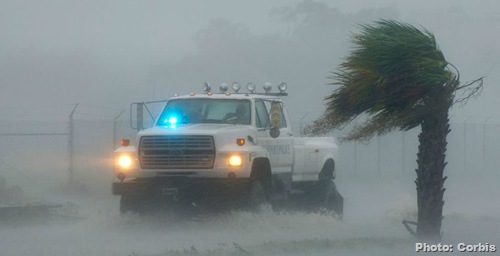
Millions of lives were turned upside down by natural disasters over the past year. And this wasn’t even a particularly bad year, according to Roger Pielke Jr., an environmental studies professor at the University of Colorado Boulder who studies the economics costs natural disasters have over time.
“It’s really hard for people to appreciate the magnitude of these events,” he said. “They only occur so often.” For him and other experts, the "worst" natural disasters included ones that caused numerous deaths, impacted large numbers of people, and resulted in high economic costs. Sometimes, though, the most extreme events were simply impressive exhibits of what the world can do.
Here’s a look at the natural disasters in 2012 that stood out.
1. Derecho windstorm
A shelf cloud on the leading edge of the derecho as seen in LaPorte, Indiana, on June 29.
Over the summer derecho suddenly became the word of the day. Pronounced “deh-REY-cho,” this unique weather system comes from the Spanish for “straight ahead,” and is characterized by high winds and widespread thunderstorms moving in a straight line. At the end of June, a super derecho stretching 700 miles across blew into the Midwest and Mid-Atlantic United States.
“There was a big frontal system that went through the Mid-Atlantic States with 100-mile-an-hour winds,” Pielke Jr. said. “It was notable because it was so widespread.”
The wind, which gusted to 91 mph in Indiana, threw trees into houses and even tossed trampolines onto power lines and rooftops. More than a dozen people were killed and more than 1.2 million homes lost power. Meteorologists attributed the storm to a heat wave the previous week that had temperatures above 100 degrees.
Analysis: DC Derecho Disaster Explained
2. United Kingdom floods
A life boat rescues residents in North Wales after torrential overnight rain on Nov. 27, 2012.
Residents in up to 500 homes in St Asaph were advised to evacuate.
When the year began, residents in the United Kingdom were more worried about drought than flooding. That didn’t last too long, Pielke Jr. said. Starting in April, the country began experiencing the most expensive flooding in five years. The period from June through August became the wettest since U.K. record keeping began 100 years ago.
Across the country, evacuation orders were issued, homes lost power and a river burst its bank in Wales while rescuers were trying to reach vacationers stranded in a park. The lifeboat crew needed an airlift to safety.
“The U.K. floods that are occurring right now are going to be pretty costly,” Pielke Jr. said. So far, the damage from flooding has cost an estimated $1.5 billion and is expected to continue rising.
3. Waldo Canyon wildfire
The Waldo Canyon Fire driven by high winds burns into a group of homes in Colorado Springs
on June 26.
Western wildfires are nothing new. Hazy skies and nights that smell like wood smoke regularly haunt the region. Other fires in Colorado had burned larger swaths of land than the one that broke out northwest of Colorado Springs on June 23. But the Waldo Canyon fire quickly made history.
“One of the things the forest fires in the West tell us is a lot about is that we’ve put ourselves - where we build, how we build - in places that are risky,” Pielke Jr. said.
The wildfire prompted an evacuation of more than 30,000 people from Colorado Springs, including the Air Force Academy. By June 26, it had exploded into the city. Ultimately the fire claimed 346 buildings, two lives, and became one of the most expensive fires in the state’s history. Investigators concluded humans caused the fire, but they couldn’t tell whether it was intentional or accidental.
4. American Midwest drought
A skull and rocks lie at the bottom of a dried-up Big Salt Marsh at Quivira National Wildlife Refuge
in south-central Kansas on Aug. 22, 2012. Experts are calling the drought of 2012 the worst drought
in the US in more than 50 years.
A mild, dry spring brought sweeping drought to the American Midwest this year, making it the worst since 1956. Official maps showing severe, extreme and exceptionally dry conditions in red make the country look like it has gaping wounds.
Kathleen Tierney, a sociology professor who heads the Natural Hazards Research and Applications Information Centre at the University of Colorado Boulder, pointed to recent Mississippi River news. The drought is so bad that waters are at a near-record low. Barge traffic has slowed to the point where business and industry leaders are begging President Obama to declare an emergency.
“They ship grain on barges and they might not be able to ship it,” Tierney said. “It’s the Mississippi River for crying out loud!”
5. Beijing floods
A collapsed bridge lies in the flood-hit Qiantougang Village of Fangshan District, a suburb of
Beijing, China, July 27, 2012.
The heaviest rain to hit Beijing in over 60 years started pounding the city on July 21. Damage was impressive: buildings collapsed, roads were submerged, neighbourhoods lost power and many lost their lives.
“It’s the typical urban flooding scenario,” Tierney said. “You pave over everything, you create so many impermeable surfaces, when you get too much water it’s going to go into any low-lying area, any underpass.” She compared the flooding to the kind that occurs in Las Vegas, where pavement is so prevalent and water has nowhere to go.
Dozens were killed by debris, electrocution, and drowning in Beijing. Chinese officials revised the initial death toll from 37 to 77 after the public questioned it, the Guardian reported.
6. Hurricane Isaac
A partially submerged truck and gazebo are seen in Hurricane Isaac's flood waters with a flooded
chemical plant in the background on Sept. 1, 2012 in Braithwaite, Louisiana.
Hurricane Isaac was no Katrina. The hurricane was a Category 1 when it reached Louisiana on Aug. 28, while Katrina had arrived as a Category 3. Isaac prompted evacuations and put the newly constructed concrete and steel Lake Borgne Surge Barrier to the test. Despite the lower winds, flooding was still a widespread problem and the hurricane damaged nearly 59,000 homes in Louisiana alone.
Rick Luettic, director of the UNC-Chapel Hill Centre for Natural Hazards and Disasters, called Isaac both a success story and a cautionary tale. “There was an awful lot of the greater New Orleans area that was protected by the hurricane protection system that has been so extensively retrofitted, redone and enhanced,” he said. At the same time, many areas outside that system were devastated.
A lot of people continue to be caught off guard, Luettic said.
7. Iran earthquake
A woman stands on the debris of her destroyed house after an earthquake in Ahar in northwest Iran.
The year’s most devastating earthquakes weren’t the 8.2 and 8.6 magnitude ones that struck Northern Sumatra in Indonesia in April. The deadliest actually occurred on Aug. 11 in Ahar, an Iranian city on the country’s northwestern edge. Two quakes struck the region, one 6.4-magnitude and the other, a 6.3-magnitude quake.
More than 300 people died from the quakes, the country’s health minister told Iran’s TV network PressTV. In addition, more than 3,000 people were injured. Staying inside was so unsafe that thousands remained outdoors to ride out the aftershocks.
A major geological fault line runs through the country, making it susceptible to quakes.
8. Philippine typhoons
Filipino residents cross a flooded village caused by monsoon rains on Sept. 1, 2012. In August,
typhoon Haikui killed more than 50 people and caused one of the worst floods in Philipine history.
“You can pretty much always count on typhoons hitting the Philippines and causing massive flooding,” said Kathleen Tierney. “The Philippines is probably one of the most disaster-prone places on Earth.”
This year, Typhoon Haikui brought massive flooding in August. While typhoons are an annual occurrence, their effects are exacerbated by poor urban development and increased population density, Tierney pointed out. Manila’s population is more than 11.4 million, and large areas of the city are informal settlements. Trash gets thrown into canals, making everything worse when storms come.
When the typhoon flooded Manila, more than a million residents were affected and 850,000 fled submerged homes, Australia's ABC News reported. Then in early December, Typhoon Bopha hit the country, killing hundreds and stranding thousands.
9. Hurricane Sandy
Power outage seen on October 29, 2012 in Manhattan, New York.
Sandy wasn’t technically a hurricane when it arrived stateside but a “post-tropical cyclone” that made landfall on Oct. 29 and swept up the East Coast, doing an estimated $63 billion in damage. The storm triggered widespread evacuations, shut down the world’s largest subway system, washed away part of the Atlantic City Boardwalk, downed electricity across New York City, and pulled two young boys from their mother’s arms in Staten Island, killing them. In the U.S., 131 people died.
“We’re going to see storms like that that are much, much more powerful,” Pielke Jr. said, pointing out that a storm in 1821 caused a 25-foot storm surge to hit Manhattan. “New York’s going to get hit again, it’s just a matter of when.”
Top image: Hurricane Isaac impacts Gulfport, Mississippi, USA.
Related Posts:
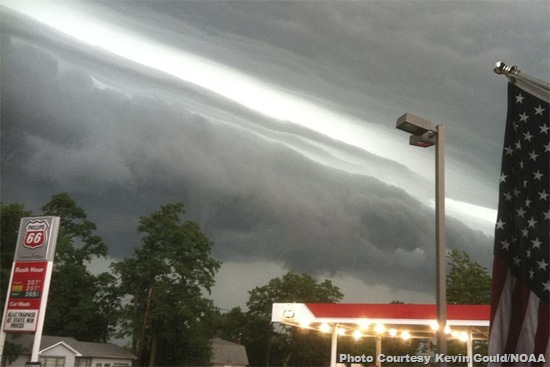
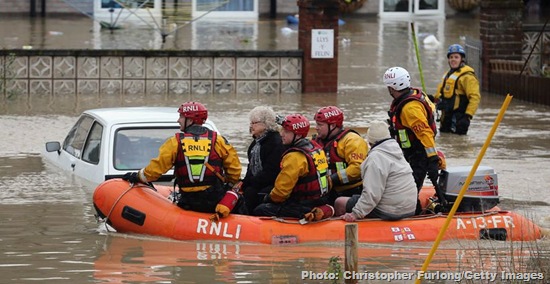

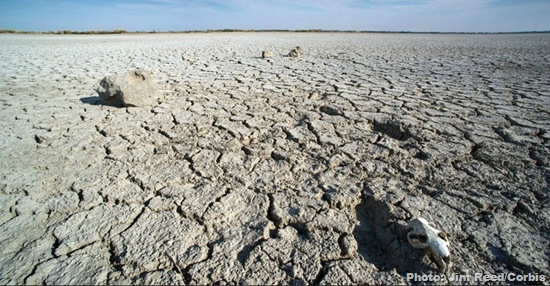


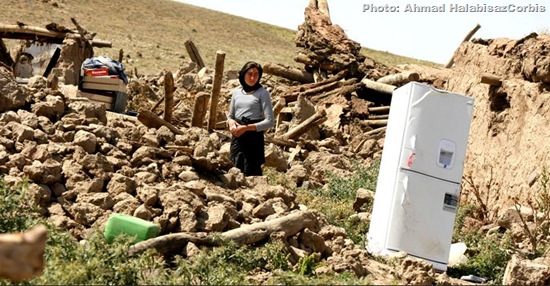
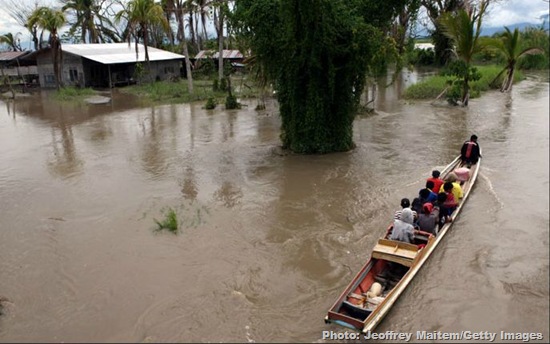
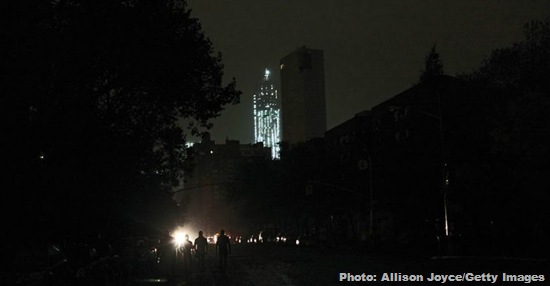
No comments:
Post a Comment
Please adhere to proper blog etiquette when posting your comments. This blog owner will exercise his absolution discretion in allowing or rejecting any comments that are deemed seditious, defamatory, libelous, racist, vulgar, insulting, and other remarks that exhibit similar characteristics. If you insist on using anonymous comments, please write your name or other IDs at the end of your message.